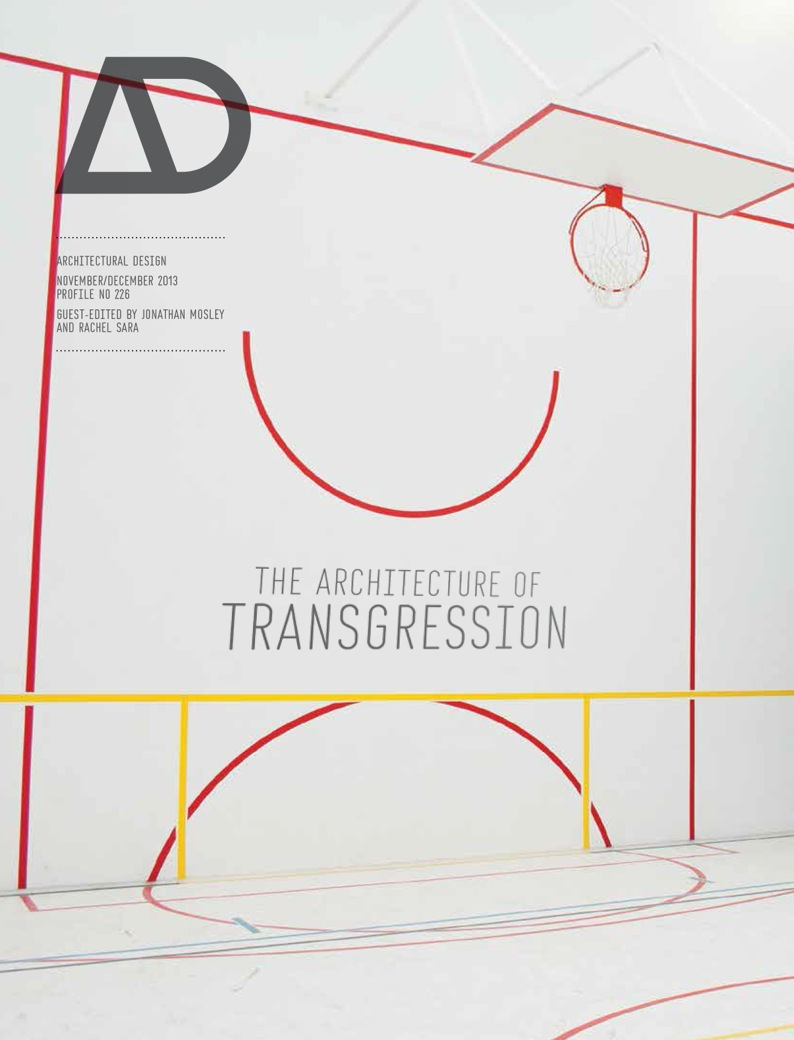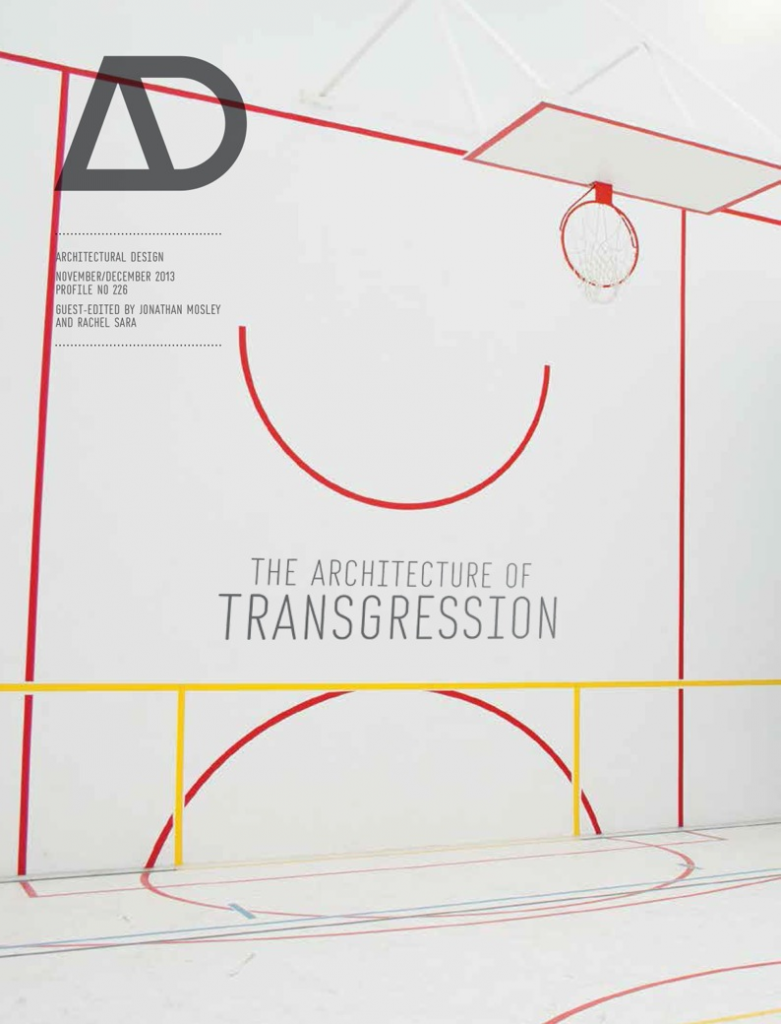Please join us to launch the recent edition of AD, the Architecture of Transgression edited by Jonathan Mosley and Rachel Sara at the University of Westminster on Thursday 13th from 17.30. The editors will talk about the issue and introduce the contents, from 18.30. Copies of AD will be available at a discounted rate. Drinks will be provided.
University of Westminster, Department of Architecture., Rm M421, 4th floor, 35 Marylebone Road, London NW1 5LS, T 020 3506 6625 for info
The AD issue includes: transgression from a sociological and philosophical perspective in order to ensure a contemporising of the concept (previous Vice-Chancellor Professor Chris Jenks (Brunel)); examination of research context in relation to architecture (architect Professor Bernard Tschumi (Columbia, New York)); examination of transgressive architectural intent (Occupy movement by Louis Rice (UWE), Superflex (Copenhagen), Can Altay (Bilgi University, Istanbul)); architectural product (Lacaton and Vassal by Robin Wilson (UCL), Didier Faustino (Paris), Wang Shu (China), Office for Subversive Architecture (Berlin/London), research of David Littlefield (UWE)); the role of the architect (Atelier d’Architecture Autogeree (by Professor Doina Petrescu (Sheffield), research of Professor Kim Dovey (University of Melbourne), Lina Bo Bardi (Brazil), EXYZT(Paris/Berlin)); and architectural process (Wikihouse (by Alastair Parvin), N55 (Copenhagen), Catie Newell (Detroit)).
The concept of transgression was first applied to an architectural context by Bernard Tschumi in his seminal essay ‘Architecture and Transgression’ (1976), which identified transgressive architecture as producing a paradoxical co-existence of both mental and sensory experience. The journal issue ‘The Architecture of Transgression’ vastly expands the scope of transgression when applied to architecture, examining the concept not only in relation to the product of architecture, but to also to its intent, the process of its production and the role and identity of those producing it. Having identified how transgression may affect architecture, these criteria are systematically employed to examine a range of contemporary practices (beyond the avant-garde) and instances of ‘architecture’ in its widest sense. The research re-scopes the field, pushing at the boundaries of what architecture is, and what it could or even should be.
The current economic crisis and accompanying political/social unrest has exacerbated the difficulty into which architecture has long been sliding: challenged by other professions and a culture of conservatism, architecture is in danger of losing its prized status as one of the pre-eminent visual arts. Transgression opens up new possibilities for practice. It highlights the positive impact that working on the architectural periphery can make on the mainstream, as transgressive practices have the potential to reinvent and reposition the architectural profession.

